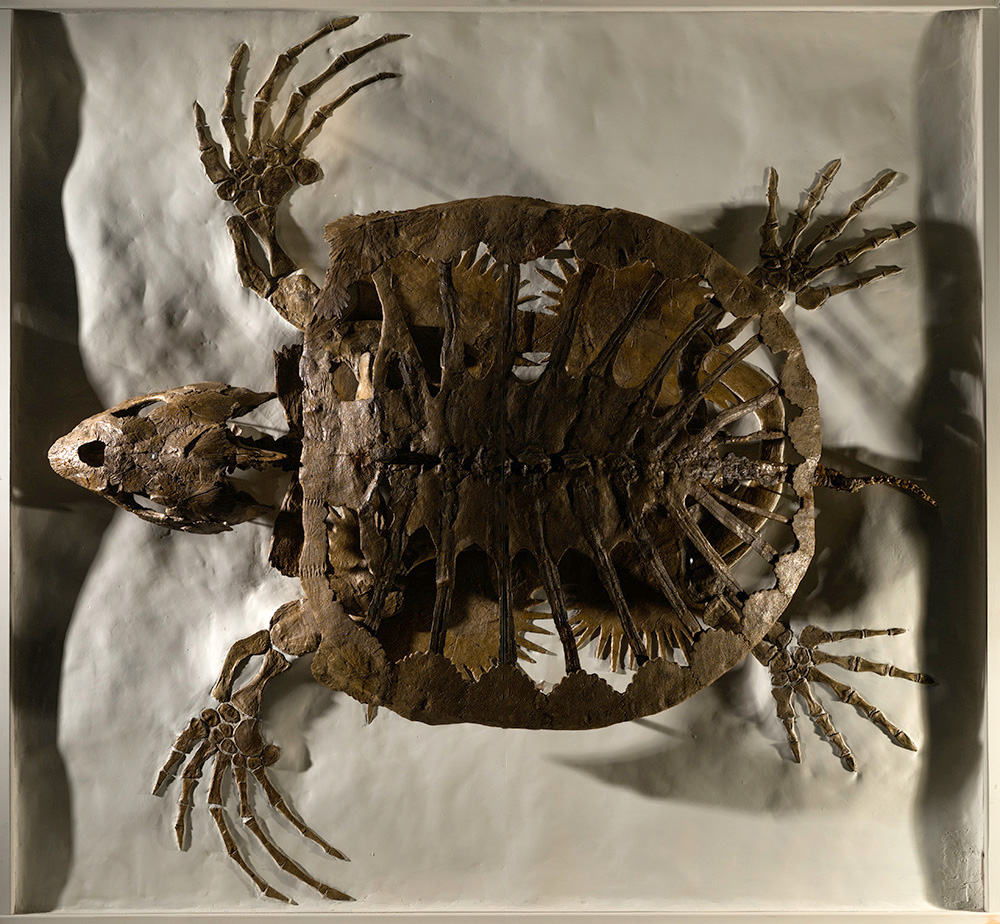
Step into an underwater world in Cretaceous Seaway, a unique exhibition hall that features gentle giants and fierce predators that lived underwater during the Age of Dinosaurs.
The hall brings to life the Western Interior Seaway, a shallow ocean that existed in the Midwestern United States 80 million years ago. Hanging over the entry, a massive Manitoba pliosaur closes in on its potential prey, a juvenile of the plesiosaur Libonectes morgani. The juvenile plesiosaur Libonectes is the only one of its kind, replica or otherwise, on display anywhere in the world.
Visitors can also examine the fossils of a giant turtle and a newly restored Tylosaurus mosasaur fossil skull. See a dramatic chase scene where a plesiosaur is in pursuit of a prehistoric diving bird. Look up, and see the king of the seaway—a 40-foot mosasaur swimming above. Two replica fossil fishes hang nearby.
Adjacent to Kamin Hall of Dinosaurs, Cretaceous Seaway is an extension of our blockbuster core exhibition that showcases life during the Cretaceous Period.

Learn about the Invertebrate Paleontology Collection at the Museum
Invertebrate Paleontology’s collection contains several noteworthy phyla, including Paleozoic trilobites, Mesozoic and Cenozoic crustaceans, lower Carboniferous brachiopods, Paleozoic gastropods, Paleozoic cephalopods, Paleozoic ophiuroids, and Pennsylvanian age eurypterids. The section also has more than 12,000 primary types and figured specimens.
